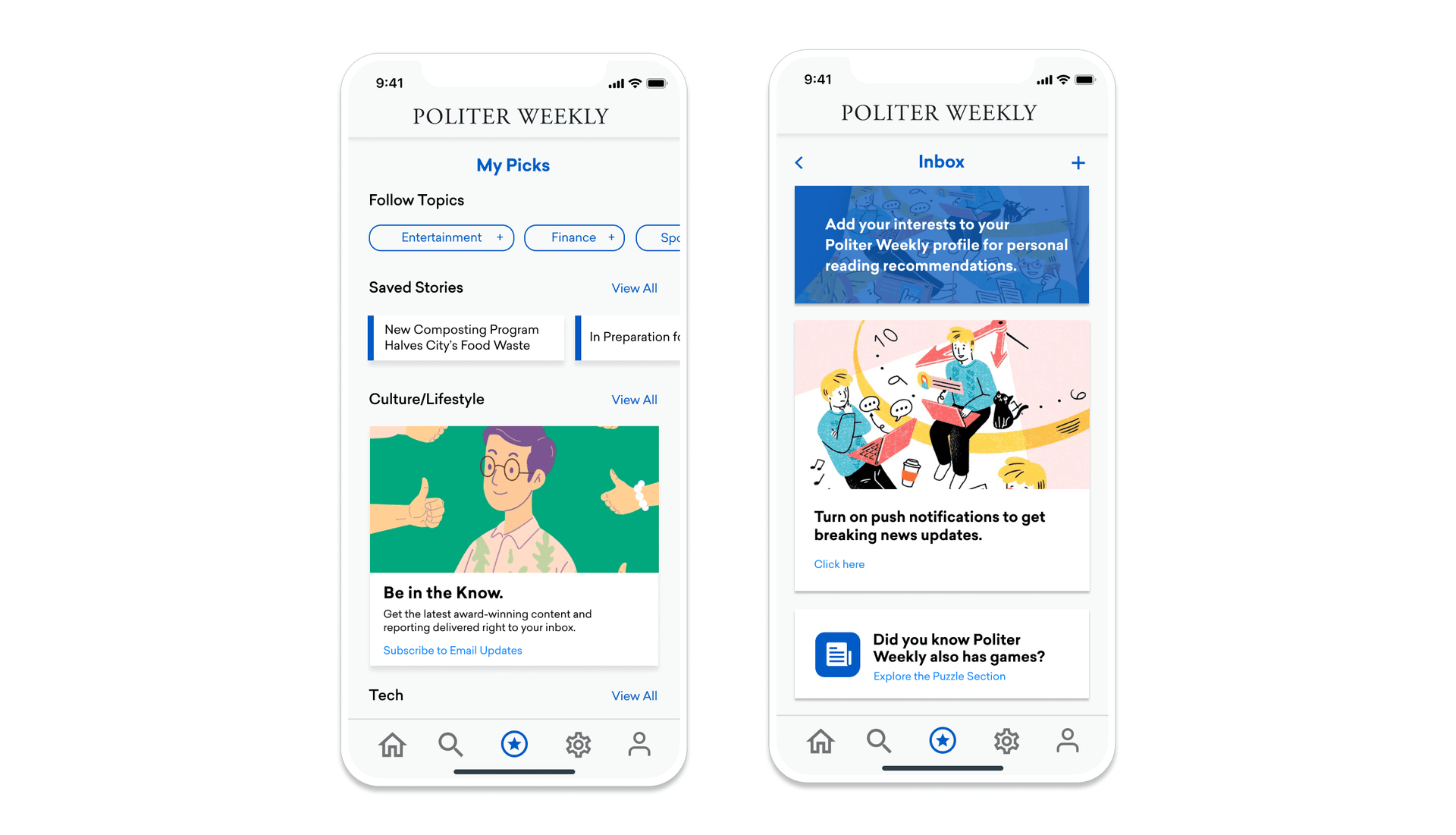Content Cards: The Messaging Metrics That Matter
Published on June 02, 2022/Last edited on June 02, 2022/7 min read


Todd Grennan
Content Production Principal, Content Marketing at BrazeNever heard of Content Cards? While this in-product messaging channel is sometimes overshadowed by higher profile out-of-product channels (e.g. email, SMS, push notifications), it’s one of the most powerful tools out there when it comes to engaging, monetizing, and retaining customers who are actively visiting your app or website.

But while brands all over the world are successfully using Content Cards to help power their customer engagement strategy, making the most of this key channel requires being able to assess their impact in meaningful ways. So whether you’ve been leveraging this channel for years or are just starting out, knowing what Content Card metrics to pay attention to is crucial to ensuring long-term success. Here are six key metrics to watch:
1. Reachable Users
A message that can’t be seen by the intended recipient isn’t going to be a successful one, no matter how great the copy or how compelling the value prop. This makes it essential to pay attention to the number of reachable users before building out a Content Cards campaign. Because Content Cards don’t require a user opt-in, the reachable audience for a general Content Card campaign should be all active users on your mobile app or website (depending on where the Content Cards are hosted).

However, if you’re using filters, segmenting your audience, or carrying out any tests that involve a control group (including the Braze Global Control Group feature), you may find that the number of users who are considered reachable could drop to a notable degree. That’s a feature, not a bug—not every Content Card should be aimed at every user, and control groups make it possible to assess the impact of the messages sent in this channel and optimize them going forward. That said, if you’re not paying attention to your reachable users, you may find yourself thinking that more people are seeing the Content Cards you’re serving up than actually are.
2. Unique Recipients
In terms of metrics, reachable users are all about who can see a given Content Card, while the unique recipients metric provides insight into how many distinct users actually did see it. Taken together, these metrics can give you a clearer picture of what percentage of your total reachable audience is actually being reached with a given campaign. That makes it possible to understand the current effectiveness of Content Cards as a channel for your brand and allows you to identify places where it might make sense to take a cross-channel approach to amplify the impact of this channel.

For Content Cards that are displayed longer than a single day, unique recipients are calculated on a daily basis—so one individual who receives that same Content Card for seven consecutive days would be counted as seven unique recipients. That gives you a fuller picture of who saw the message and how often. However, if you’re looking to understand how many individual people on average saw the Content Card each day, you’ll need to divide the metric by the number of days the Content Card was displayed in order to determine that number.
3. Unique and Total Impressions
If the number of unique recipients tells you how many people saw a given Content Card, the number of impressions tells you how many times that Content Card was viewed. By looking at the impressions associated with your Content Cards, you can get a picture of what engagement in this channel looks like, both for specific campaigns and for the channel as a whole.

Depending what you’re looking to assess with this metric, which specific kind of impressions you want to look at may differ. With total impressions, you’re looking at the total count in terms of views for a given Content Card, while unique impressions count the number of unique views. So if one user looks at a message 100 times in one day, that’ll increase the total impressions for that Content Card by 100, but increase the number of unique impressions by only one impression. In general, total impressions give you a sense of how many times people in general are seeing a given Content Card, showcasing its reach, while unique impressions can help to cut through the noise that a small number of highly engaged users can create to better showcase the per-user reach of these campaigns.
4. Total and Unique Dismissals
One of the strengths of Content Cards is that they’re persistent—that is, they stick around in a memorable, unobtrusive way, giving recipients multiple opportunities to engage with a message without interrupting their experience of your app or website. That said, sometimes a Content Card may persist a bit longer than recipients prefer, leading them to dismiss it before it’s scheduled to expire.

Like unsubscribes in the email marketing world, Content Card dismissals can be a useful proxy for understanding which messages might be rubbing recipients the wrong way—or which may have a shorter shelf life than you anticipated. As with impressions, you can get different insights by looking at the unique and total versions of this metric. For recurring Content Card campaigns, a Content Card may be resurfaced multiple times, potentially allowing a single user to dismiss it multiple times. Accordingly, a total dismissal count that’s significantly higher than a unique dismissal number may suggest that a specific subset of your audience is fed up with this particular campaign and should potentially be filtered out of future sends.
5. Conversions
In general, brands send their customers messages because they want the recipients to do something. Sometimes it might just be to take in the information they’re sharing, but more often it’s to take action: Open their app, make a purchase, sign up for a newsletter, subscribe to a service, etc. By keeping an eye on Content Card conversions, you can assess how successfully the messages you send are helping to support that goal, whatever it is.

Here’s the tricky thing about conversions as a metric: Whether they tell you anything useful about your marketing program depends most of all on you. Too many brands fail to set meaningful goals for the messaging campaigns or set goals that don’t truly map to the point of the campaign. For instance, a promotional email could have “logged session” as the conversion event, but probably “made purchase” is actually what will tell you if the campaign is working the way it’s intended. If you plan ahead and set a meaningful conversion event, however, this metric can be an incredibly powerful tool for assessing the impact of this channel on your goals.
6. Revenue
This one is pretty straightforward. Tracking campaign revenue as a metric makes it possible to determine the positive impact that the Content Card campaigns you send are having on your company’s bottom line. Because of the persistent, unobtrusive nature of Content Cards, they can function almost like a native ad within your app or website, allowing you to use them to easily drive customers toward making a purchase and potentially having a significant impact on revenue.

To gather this information, you’ll need to be tracking purchase events, subscriptions, and other actions that translate directly into measurable revenue. How complete a picture you’ll have of the revenue being driven by each campaign may be impacted by your data collection plan, so make sure you dig into what is and isn’t possible before you start trying to track this kind of granular campaign-by-campaign information.
Final Thoughts
As a messaging channel, Content Cards are defined by their flexibility. That makes them a powerful way to reach your customers and meet your marketing needs, but it also introduces an element of nuance when it comes to tracking metrics for this channel.
Different brands use Content Cards differently, and that has implications for what stats you should be watching. If you’re using this channel primarily for informational purposes, you’re going to want to adjust your metric mix to focus on impressions, conversions, and dismissals. If, on the other hand, Content Cards are primarily a promotional channel for your business, it makes more sense to focus on revenue as a metric, though keeping an eye on other engagement metrics could still be valuable.
Interested in doing more with Content Cards in your customer marketing efforts? Check out our Content Cards Inspiration Guide.
Related Tags
Be Absolutely Engaging.™
Sign up for regular updates from Braze.
Related Content
 Article5 min read
Article5 min readWhen buffer management goes wrong: Avoiding bias in AI decisioning models
January 13, 2026 Article9 min read
Article9 min readHow AI Decisioning Transforms Marketing (A Complete Guide)
January 08, 2026 Article6 min read
Article6 min readAI decisioning cheat sheet: How to crawl/walk/run with BrazeAI Decisioning Studioᵀᴹ
January 08, 2026